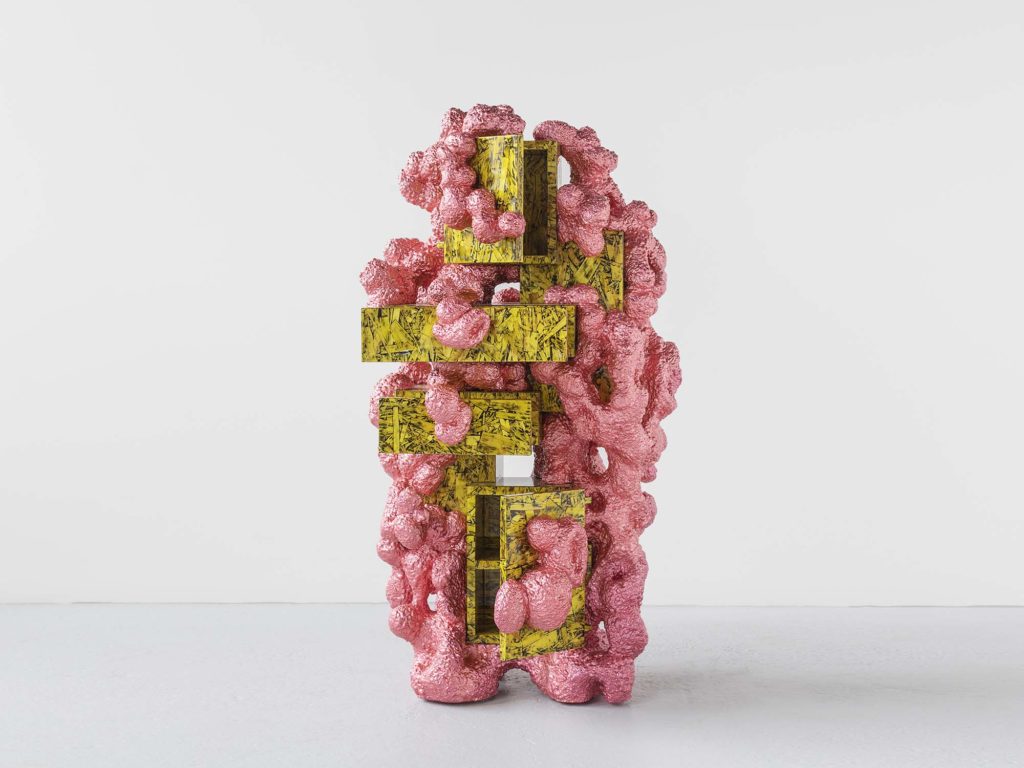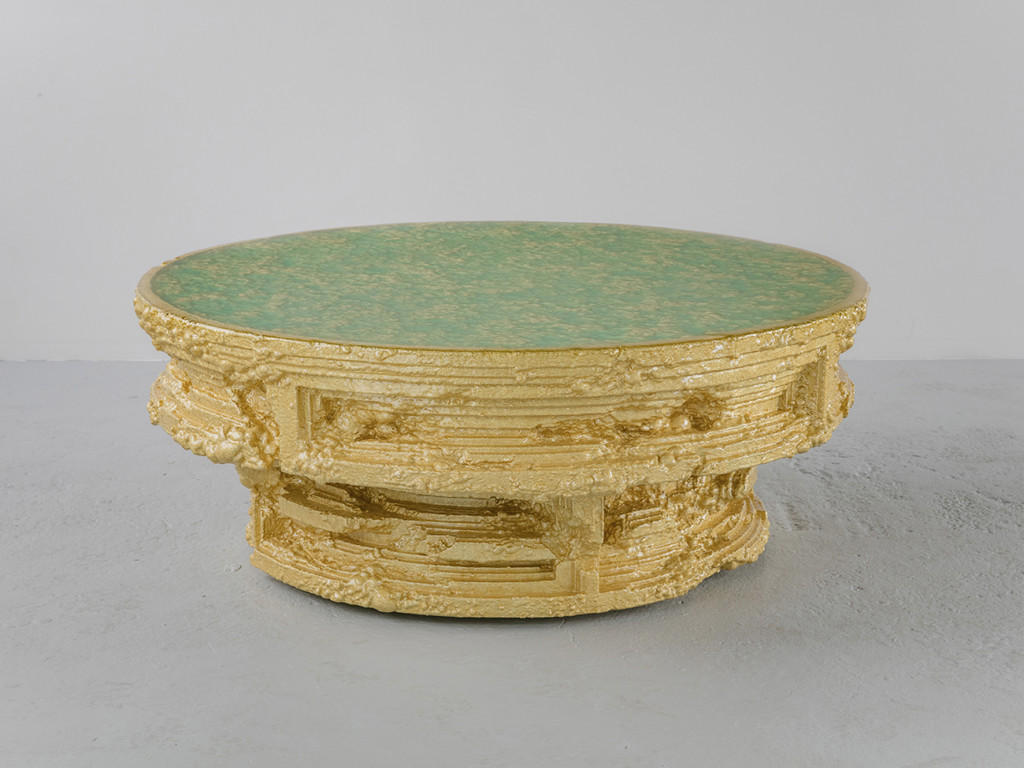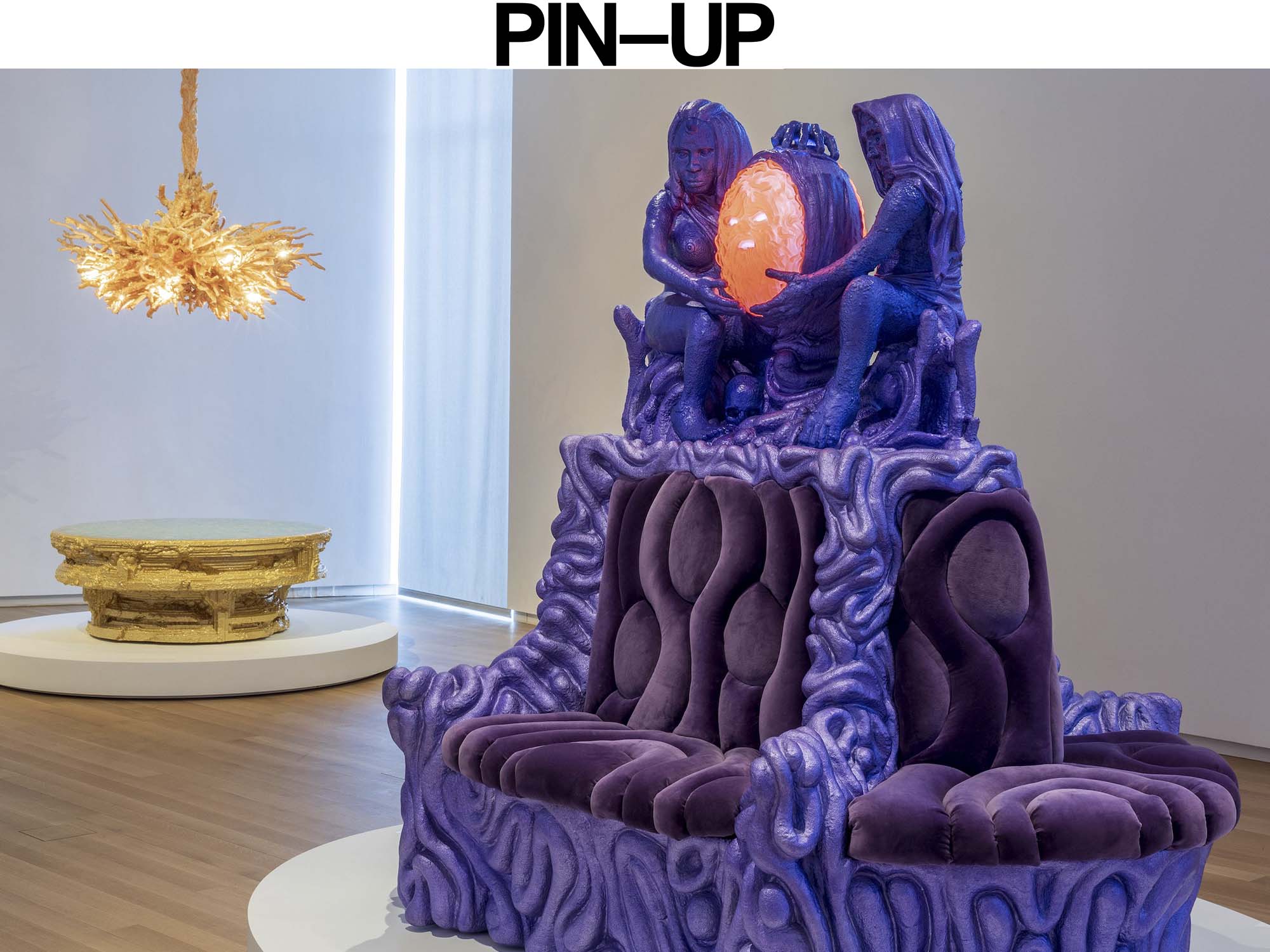By Brecht Wright Gander
Here’s a dirty secret: museums are full of foam. Artists from Yayoi Kusama to Jean Dubuffet have used it as a substrate for everything from fiberglass to concrete. Expanded polystyrene also lines the thin stucco shells of Florida McMansions, adds mass to faux mountains in theme parks, and fills in for the missing innards of taxidermied bears. Foam surrounds us, but it almost always appears in the guise of something else. This is likely because through long association with disposable packaging, it has come to feel irredeemably cheap, flimsy, and pedestrian.
Chris Schanck is one of the few artists to own up to his foam, making a point to emphasize rather than conceal its specific materiality. His solo show, Off-World, at the Museum of Arts and Design in New York City, is an index of the results. He exploits expanded polystyrene’s tendency to fracture into a pebbled edge, suggesting erosion, and takes advantage of the material’s unusual quality of being both lightweight and bulky at once, creating on an almost architectural scale. There are other foams, of course — Lynda Benglis and Gaetano Pesce are known for their work with the urethane variety. These often begin as liquids, which are catalyzed into hardened blobbiness. While urethanes can be frozen during eloquent moments of pouring, tumescing, and blooming, expanded polystyrenes are almost mute by comparison: they come factory formatted as rectangular slabs of chemical-white nuggets.
And yet Schanck’s work has baroque splendor. His polystyrene comes gilded in metallic foils and sealed with gloss resins so that it attains an immaculate, glistening polish. In this, his work recalls a tradition of craft that fetishizes mastery. In the late baroque period sophistication shaded into dissolution, abundance into excess, and ornamentation into the grotesque. Schanck borrows from both ends, building chords out of splendor and decadence, glamour and camp. He credits the culture of Detroit, where he’s had a studio since 2011, as a singular influence. It is, he says, a city where the “material culture is incredibly resourceful and inventive and optimistic.” If Detroit has encouraged him to ennoble common materials through invention and industry, it has also imbued his work with a palpable feeling of deterioration. In Schanck’s designs, splendor aches, romance is forlorn, and gilded treasures come laden with a complicated nostalgia for craft’s baroque apogee.
Off-World is a profusion of hombres, rich metallic glosses, satins, and velvets, all rendered in a dazzling-bright color palette. In Shuddering Cabinet (2022), oriented strand board, a cheap and ubiquitous construction material, makes up the cabinet’s carcass. A network of metallic purple nodules colonizes its outer surface. The piece can be read as a palandrome: an ordinary material is in revelatory blossom, or aggressive luxurification is infecting something that was familiar and commonplace.


The title of Scrying Table III (2018) refers to an occult practice whereby a surface, often inscribed with symbols, is used in divination. In this case the tabletop looks like an eerie, translucent green liquid. The base and sides are a crenulated imbrication of crumbling surfaces and dense, broken labyrinths of rectilinear patterns. Ornamental reliefs collapse as though by over-multiplication, interrupting and crashing into each other. Boils fizz up at the joints — foam literally foaming. Embellishment hypertrophying into a self-annihilating compulsion.
Another group of works include bricolage assemblages. Schanck gathers sticks, twigs, and resin-hardened fabrics into chandeliers and dressing tables. In one triumphant moment, sticks that protrude from the sides of a cabinet function as pivot hinges. Crude materials, masterly construction.
The last series of works is figurative. Sci-fi tangles of intestinal tubes are gnarled around alienesque figures. What comes through in these playful, non-threatening works is the sense of an artist enjoying himself — finding relief from his signature mode and seeking refuge from the market’s demand that he keep re-writing the same successful song.
Innovating a craft process is terribly difficult. Even harder is refining an innovation so that it becomes lapidary, so that the new process has the controlled finish of something developed through generations of incremental improvement. The sheer production prowess on display in Off-World is breathtaking. We can be grateful that one museum, at least, is not afraid to show its foam.










